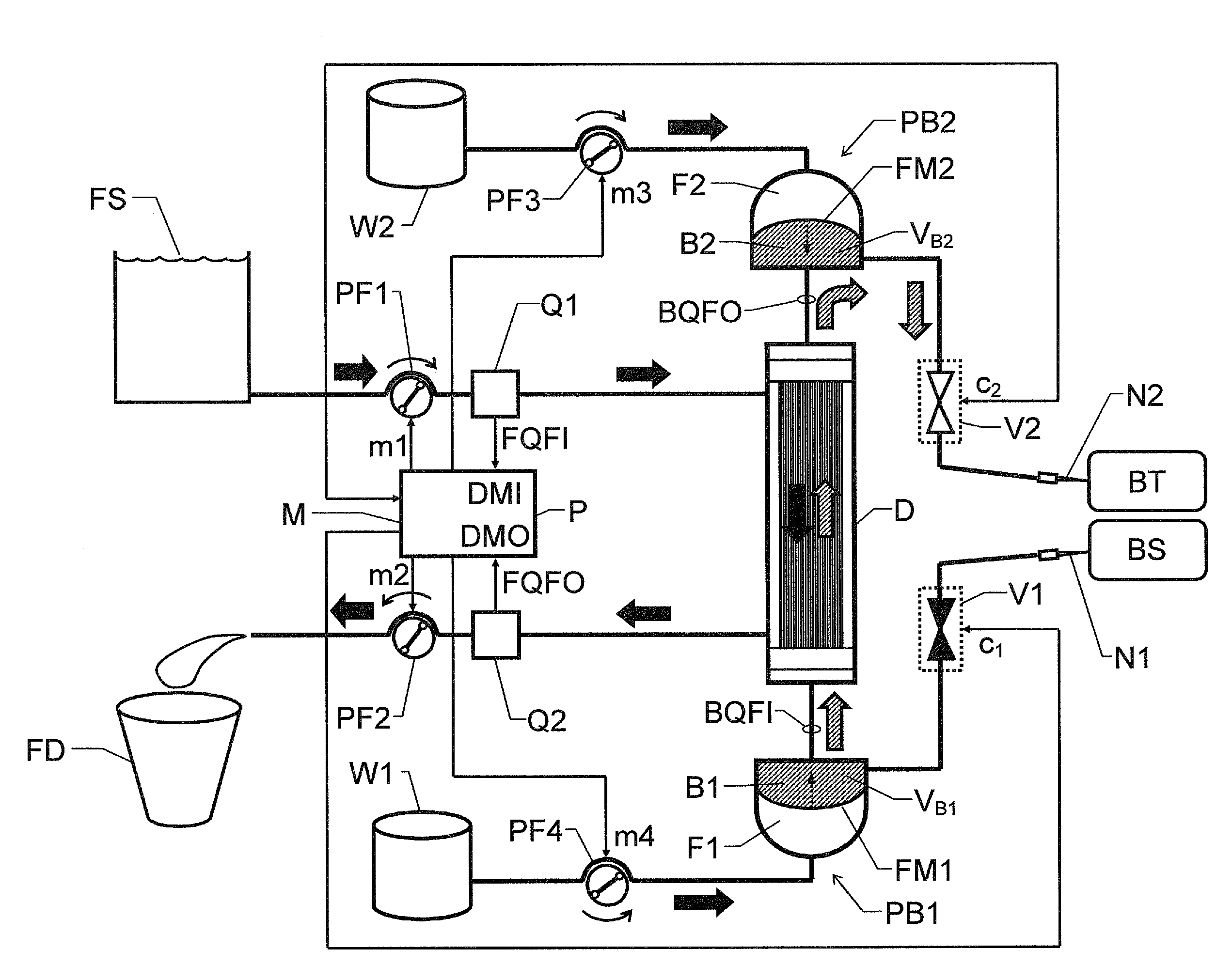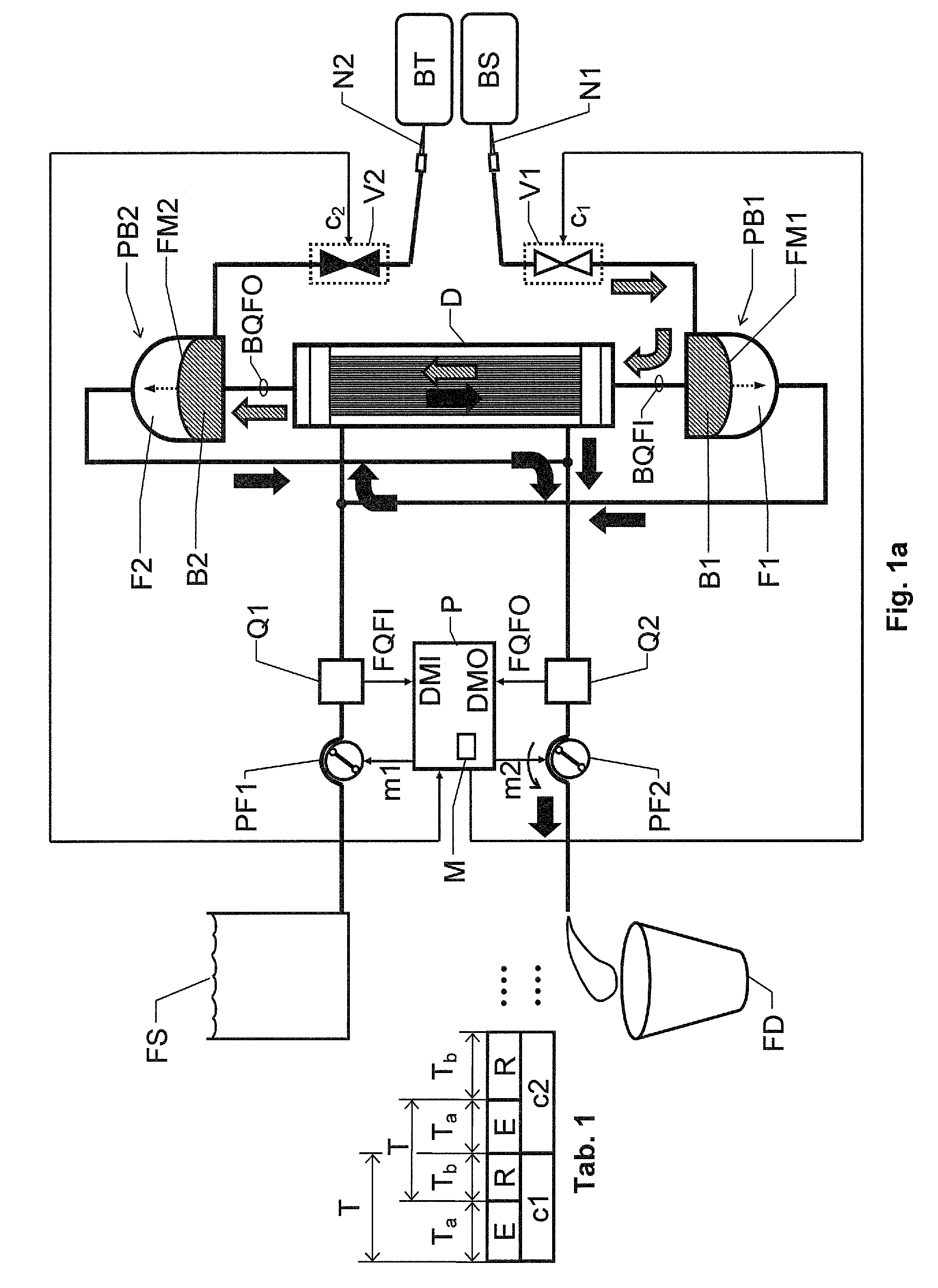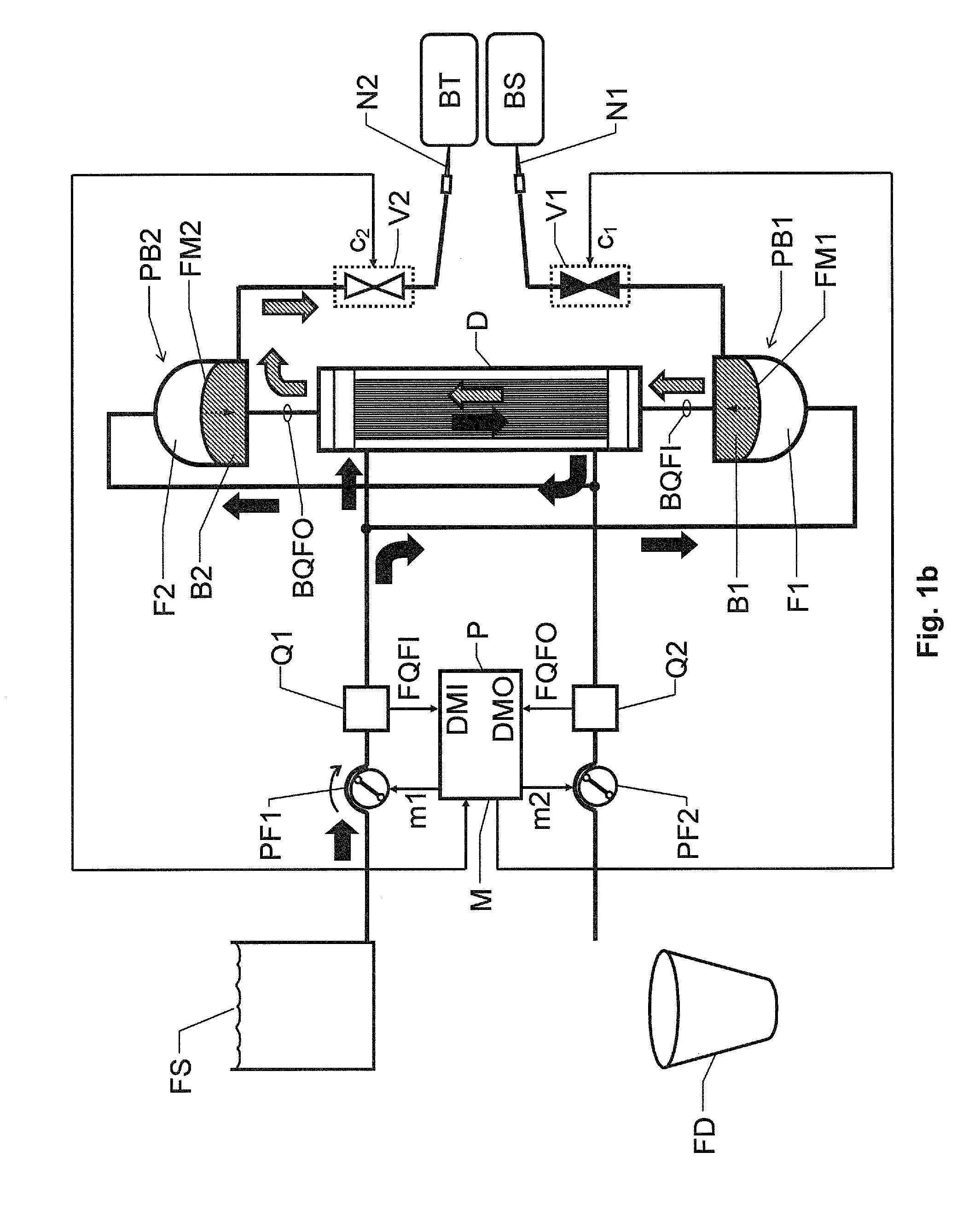Blood treatment apparatus and method
a blood treatment apparatus and blood technology, applied in the direction of solvent extraction, other blood circulation devices, separation processes, etc., can solve the problems of unreliable blood flow measurement derived from the pump speed, unfavorable accurate blood flow measurement, and complicated measurement of blood flow accurately
- Summary
- Abstract
- Description
- Claims
- Application Information
AI Technical Summary
Benefits of technology
Problems solved by technology
Method used
Image
Examples
first embodiment
[0024]We refer initially to FIG. 1a, which shows a block diagram over a blood treatment apparatus (e.g. a dialysis apparatus) according to the invention during a first phase E of a cyclic blood treatment process.
[0025]Table 1 illustrates how the first phase E and a second phase R are related to one another. We assume that a first cycle c1 of the process includes one repetition each of the first and second phases E and R respectively. Then follows a second cycle c2, likewise including one repetition each of the first and second phases E and R, and so on.
[0026]The apparatus includes a blood treatment unit D, a pair of fluid pumps PF1 and PF2 respectively, a pair of blood pumps PB1 and PB2 respectively and flow measurement means, which in turn, include first and second flow meters Q1 and Q2 respectively and a control unit P. Moreover, the apparatus includes first and second blood valve means V1 and V2 respectively.
[0027]The blood treatment unit D is configured to receive untreated bloo...
second embodiment
[0061]FIGS. 2a and 2b show block diagrams over a blood treatment apparatus according to the invention during the first and second phases E and R respectively of the proposed cyclic treatment process. In FIGS. 2a and 2b all units and components having reference signs, which also occur in FIGS. 1a and 1b designate the same units and components as those described above with reference to FIGS. 1a and 1b.
[0062]The second embodiment differs from the first embodiment of the invention in that the blood pumps PB1 and PB2 are not cross-connected relative to the inlet and outlet for receiving fresh blood treatment fluid and discharging used blood treatment fluid respectively. Instead, first and second additional fluid pumps PF3 and PF4 respectively are included to control the blood pumps PB1 and PB2 as desired (i.e. cause the flexible members FM1 and FM2 to reach their respective end positions essentially simultaneously).
[0063]The control unit P is configured to control the first additional f...
third embodiment
[0064]FIGS. 3a and 3b show block diagrams over a blood treatment apparatus according to the invention during the first and second phases E and R respectively of the proposed cyclic treatment process. In FIGS. 3a and 3b all units and components having reference signs, which also occur in FIGS. 1a, 1b, 2a and 2b designate the same units and components as those described above with reference to FIGS. 1a, 1b, 2a and 2b.
[0065]The third embodiment differs from the first and second embodiments of the invention primarily in that the blood pumps PB1 and PB2 are controlled via a working fluid, which is separated from the blood treatment fluid. To accomplish this, in the design shown in FIGS. 3a and 3b the second accumulation container F1 of the first blood pump PB1 is connected to a first working-fluid container W1, and the second accumulation container F2 of the second blood pump PB2 is connected to a second working-fluid container W2. A respective additional fluid pump PF3 and PF4 is arran...
PUM
 Login to View More
Login to View More Abstract
Description
Claims
Application Information
 Login to View More
Login to View More - R&D
- Intellectual Property
- Life Sciences
- Materials
- Tech Scout
- Unparalleled Data Quality
- Higher Quality Content
- 60% Fewer Hallucinations
Browse by: Latest US Patents, China's latest patents, Technical Efficacy Thesaurus, Application Domain, Technology Topic, Popular Technical Reports.
© 2025 PatSnap. All rights reserved.Legal|Privacy policy|Modern Slavery Act Transparency Statement|Sitemap|About US| Contact US: help@patsnap.com



